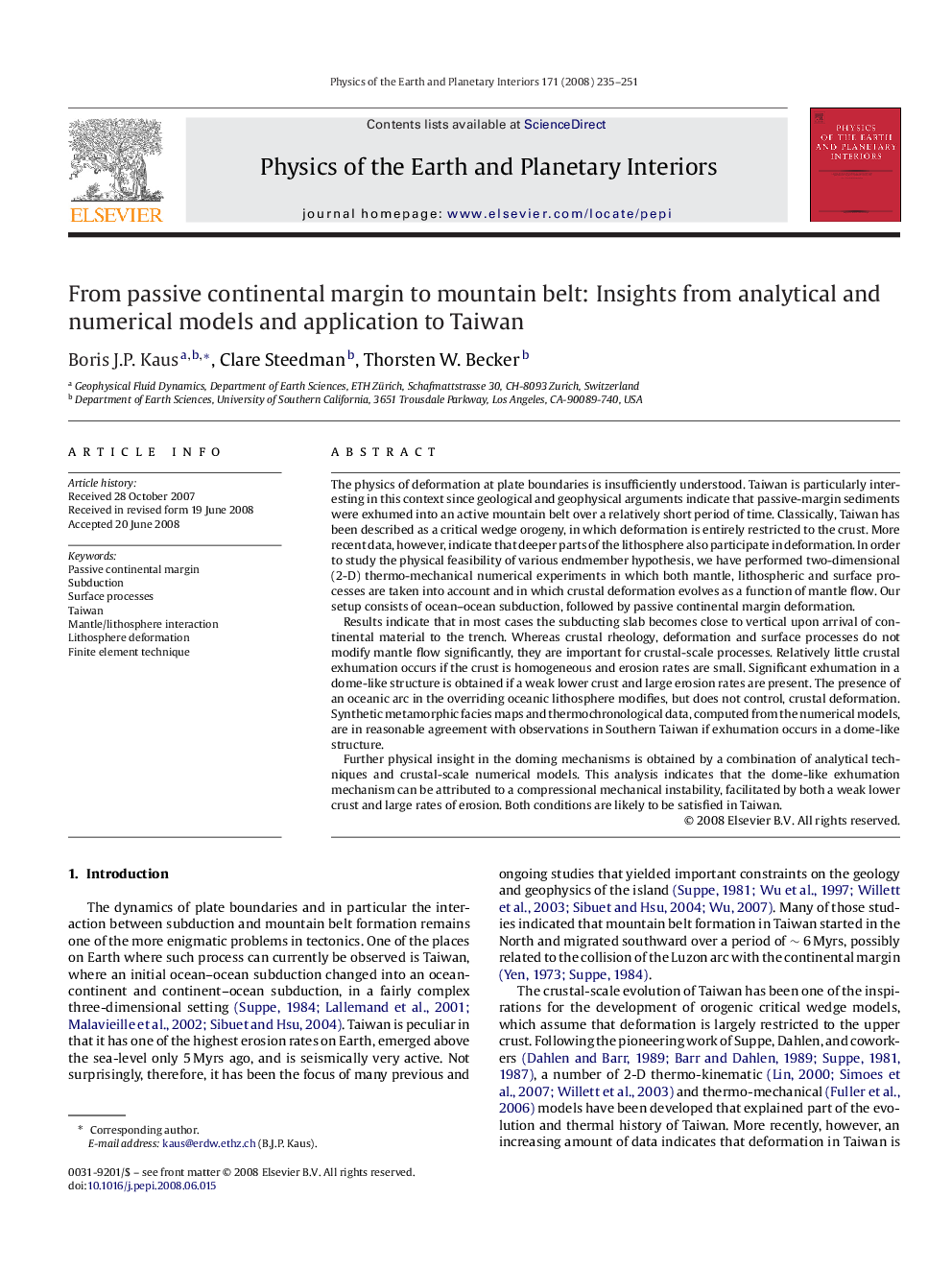| Article ID | Journal | Published Year | Pages | File Type |
|---|---|---|---|---|
| 4742320 | Physics of the Earth and Planetary Interiors | 2008 | 17 Pages |
The physics of deformation at plate boundaries is insufficiently understood. Taiwan is particularly interesting in this context since geological and geophysical arguments indicate that passive-margin sediments were exhumed into an active mountain belt over a relatively short period of time. Classically, Taiwan has been described as a critical wedge orogeny, in which deformation is entirely restricted to the crust. More recent data, however, indicate that deeper parts of the lithosphere also participate in deformation. In order to study the physical feasibility of various endmember hypothesis, we have performed two-dimensional (2-D) thermo-mechanical numerical experiments in which both mantle, lithospheric and surface processes are taken into account and in which crustal deformation evolves as a function of mantle flow. Our setup consists of ocean–ocean subduction, followed by passive continental margin deformation.Results indicate that in most cases the subducting slab becomes close to vertical upon arrival of continental material to the trench. Whereas crustal rheology, deformation and surface processes do not modify mantle flow significantly, they are important for crustal-scale processes. Relatively little crustal exhumation occurs if the crust is homogeneous and erosion rates are small. Significant exhumation in a dome-like structure is obtained if a weak lower crust and large erosion rates are present. The presence of an oceanic arc in the overriding oceanic lithosphere modifies, but does not control, crustal deformation. Synthetic metamorphic facies maps and thermochronological data, computed from the numerical models, are in reasonable agreement with observations in Southern Taiwan if exhumation occurs in a dome-like structure.Further physical insight in the doming mechanisms is obtained by a combination of analytical techniques and crustal-scale numerical models. This analysis indicates that the dome-like exhumation mechanism can be attributed to a compressional mechanical instability, facilitated by both a weak lower crust and large rates of erosion. Both conditions are likely to be satisfied in Taiwan.
